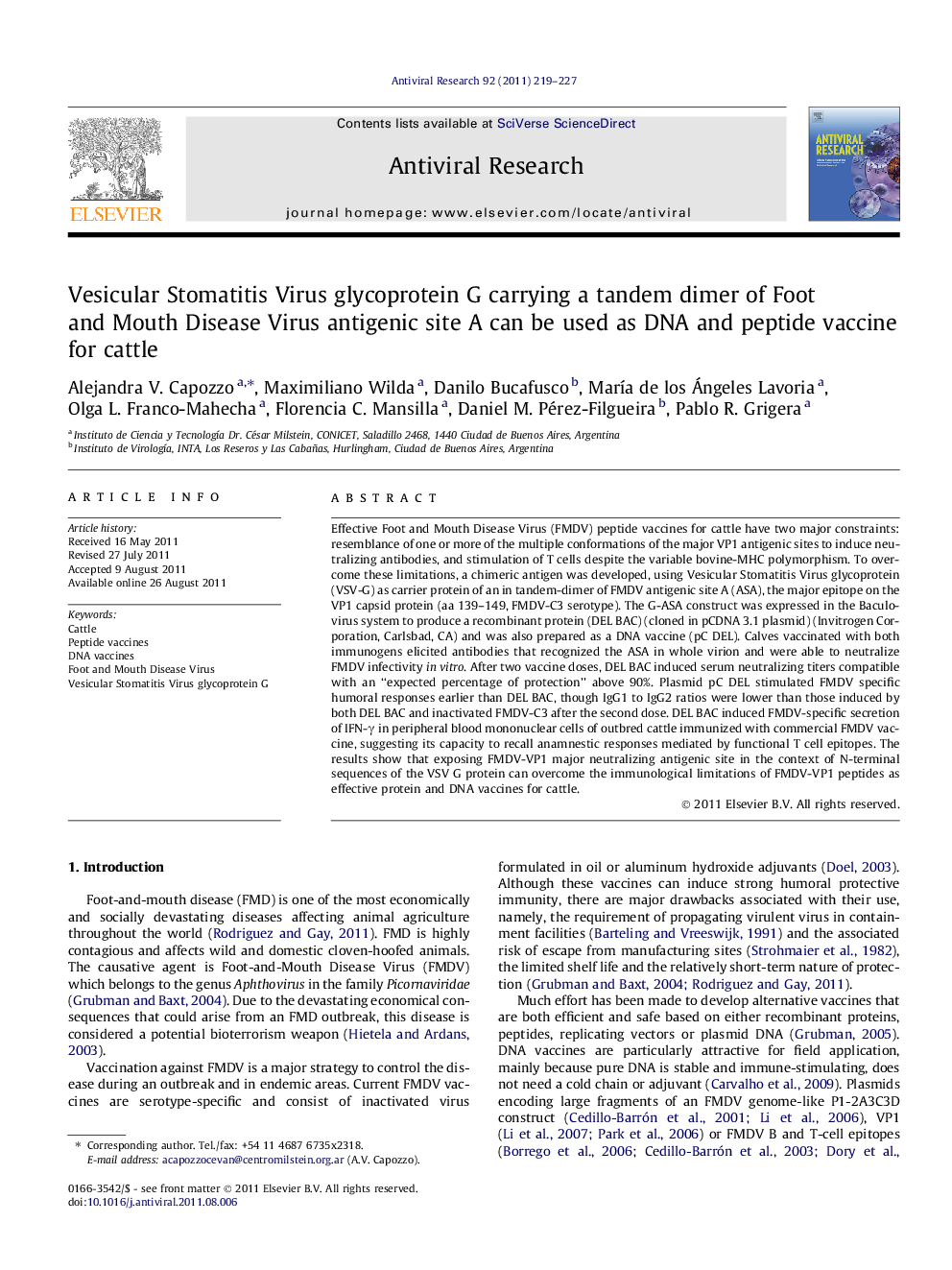| Article ID | Journal | Published Year | Pages | File Type |
|---|---|---|---|---|
| 2510218 | Antiviral Research | 2011 | 9 Pages |
Effective Foot and Mouth Disease Virus (FMDV) peptide vaccines for cattle have two major constraints: resemblance of one or more of the multiple conformations of the major VP1 antigenic sites to induce neutralizing antibodies, and stimulation of T cells despite the variable bovine-MHC polymorphism. To overcome these limitations, a chimeric antigen was developed, using Vesicular Stomatitis Virus glycoprotein (VSV-G) as carrier protein of an in tandem-dimer of FMDV antigenic site A (ASA), the major epitope on the VP1 capsid protein (aa 139–149, FMDV-C3 serotype). The G-ASA construct was expressed in the Baculovirus system to produce a recombinant protein (DEL BAC) (cloned in pCDNA 3.1 plasmid) (Invitrogen Corporation, Carlsbad, CA) and was also prepared as a DNA vaccine (pC DEL). Calves vaccinated with both immunogens elicited antibodies that recognized the ASA in whole virion and were able to neutralize FMDV infectivity in vitro. After two vaccine doses, DEL BAC induced serum neutralizing titers compatible with an “expected percentage of protection” above 90%. Plasmid pC DEL stimulated FMDV specific humoral responses earlier than DEL BAC, though IgG1 to IgG2 ratios were lower than those induced by both DEL BAC and inactivated FMDV-C3 after the second dose. DEL BAC induced FMDV-specific secretion of IFN-γ in peripheral blood mononuclear cells of outbred cattle immunized with commercial FMDV vaccine, suggesting its capacity to recall anamnestic responses mediated by functional T cell epitopes. The results show that exposing FMDV-VP1 major neutralizing antigenic site in the context of N-terminal sequences of the VSV G protein can overcome the immunological limitations of FMDV-VP1 peptides as effective protein and DNA vaccines for cattle.
► A chimeric antigen was designed to enhance FMD-peptides’ immunogenicity in cattle. ► It contains the FMDV antigenic site A in the context of VSV glycoprotein G. ► The chimeric construct was evaluated as a peptide and DNA vaccine in cattle. ► Antibodies elicited by the chimera recognized the epitope in the native virus. ► High neutralizing titers were developed after two doses in vaccinated calves.
